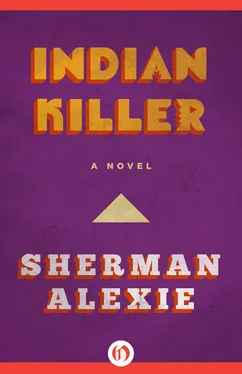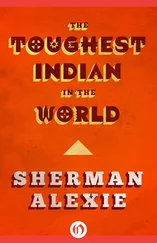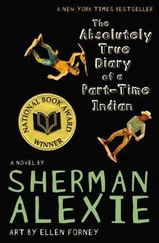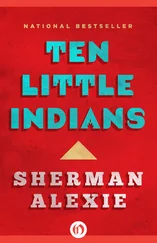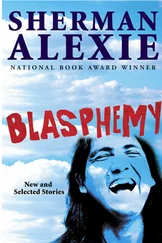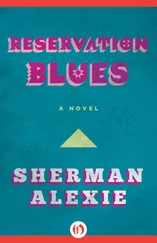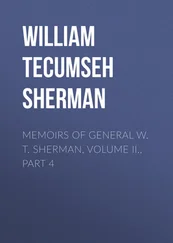“Honey,” Daniel whispered to his wife when John woke up crying. Three in the morning, the moon full and bright white. “Honey, it’s the baby.”
Olivia rose from bed, walked into the nursery, and picked up John. She carried him to the window.
“Look, sweetie,” she said to John. “It’s just the moon. See, it’s pretty.”
Daniel listened to his wife talking to their son.
“It’s the moon,” she said and then said the word in Navajo, Lakota, Apache. She had learned a few words in many Indian languages. From books, Western movies, documentaries. Once she saw an Indian woman at the supermarket and asked her a few questions that were answered with bemused tolerance.
“It’s just the moon,” whispered Olivia and then she softly sang it. “It’s the moon. It’s the moon.”
Daniel listened for a few minutes before he rolled over and fell asleep. When he woke the next morning, Olivia was standing at that same window with John in her arms, as if she’d been there all night.
“We need to get John baptized,” she said with a finality that Daniel didn’t question.
Because the baby John was Indian, Olivia and Daniel Smith wanted him to be baptized by an Indian, and they searched for days and weeks for the only Indian Jesuit in the Pacific Northwest. Father Duncan, a Spokane Indian Jesuit, was a strange man. A huge man, an artist. He painted contemporary landscapes, portraits, and murals that were highlighted with traditional Spokane Indian images. His work was displayed in almost every Jesuit community in the country. He was a great teacher, a revered theologian, but an eccentric. He ate bread and soup at every meal. Whole grains and vegetable broth, sourdough and chicken stock. He talked to himself, laughed at inappropriate moments, sometimes read books backward, starting with the last page and working toward the beginning. An irony, an Indian in black robes, he took a special interest in John and, with Olivia and Daniel’s heartfelt approval, often visited him. The Jesuit held the baby John in his arms, sang traditional Spokane songs and Catholic hymns, and rocked him to sleep. As John grew older, Father Duncan would tell him secrets and make him promise never to reveal them. John kept his promises.
On a gray day when John was six years old, Father Duncan took him to see the Chapel of the North American Martyrs in downtown Seattle. John found himself surrounded by vivid stained glass reproductions of Jesuits being martyred by Indians. Bright white Jesuits with bright white suns at their necks. A Jesuit, tied to a post, burning alive as Indians dance around him. Another pierced with dozens of arrows. A third, with his cassock torn from his body, crawling away from an especially evil-looking Indian. The fourth being drowned in a blue river. The fifth, sixth, and seventh being scalped. An eighth and ninth praying together as a small church burns behind them. And more and more. John stared up at so much red glass.
“Beautiful, isn’t it?” asked Father Duncan.
John did not understand. He was not sure if Father Duncan thought the artwork was beautiful, or if the murder of the Jesuits was beautiful. Or both.
“There’s a myth, a story, that the blood of those Jesuits was used to stain the glass,” said Duncan. “But who knows if it’s true. We Jesuits love to tell stories.”
“Why did the Indians kill them?”
“They wanted to kick the white people out of America. Since the priests were the leaders, they were the first to be killed.”
John looked up at the stained glass Jesuits, then at the Spokane Indian Jesuit.
“But you’re a priest,” said John.
“Yes, I am.”
John did not have the vocabulary to express what he was feeling. But he understood there was something odd about the contrast between the slaughtered Jesuits and Father Duncan, and between the Indian Jesuit and the murderers.
“Did the white people leave?” asked John.
“Some of them did. But more came.”
“It didn’t work.”
“No.”
“Why didn’t the Indians kill all the white people?”
“They didn’t have the heart for it.”
“But didn’t white people kill most of the Indians?”
“Yes, they did.”
John was confused. He stared up at the martyred Jesuits. Then he noticed the large crucifix hanging over the altar. A mortally wounded Jesus, blood pouring from his hands and feet, from the wound in his side. John saw the altar candles burning and followed the white smoke as it rose toward the ceiling of the chapel.
“Was Jesus an Indian?” asked John.
Duncan studied the crucifix, then looked down at John.
“He wasn’t an Indian,” said the Jesuit, “but he should have been.”
John seemed to accept that answer. He could see the pain in Jesus’s wooden eyes. At six, he already knew that a wooden Jesus could weep. He’d seen it on the television. Once every few years, a wooden Jesus wept and thousands of people made the pilgrimage to the place where the miracle happened. If miracles happened with such regularity when did they cease to be miracles? And simply become ordinary events, pedestrian proof of God? John knew that holy people sometimes bled from their hands and feet, just as Jesus had bled from his hands and feet when nailed to the cross. Such violence, such faith.
“Why did they do that to Jesus?” asked John.
“He died so that we may live forever.”
“Forever?”
“Forever.”
John looked up again at the windows filled with the dead and dying.
“Did those priests die like Jesus?” asked John.
Father Duncan did not reply. He knew that Jesus was killed because he was dangerous, because he wanted to change the world in a good way. He also knew that the Jesuits were killed because they were dangerous to the Indians who didn’t want their world to change at all. Duncan knew those Jesuits thought they were changing the Indians in a good way.
“Did they die like Jesus?” John asked again.
Duncan was afraid to answer the question. As a Jesuit, he knew those priests were martyred just like Jesus. As a Spokane Indian, he knew those Jesuits deserved to die for their crimes against Indians.
“John,” Duncan said after a long silence. “You see these windows? You see all of this? It’s what is happening inside me right now.”
John stared at Duncan, wondering if the Jesuit had a stained glass heart. Rain began to beat against the windows, creating an illusion of movement on the stained faces of the murderous Indians and martyred Jesuits, and on young John’s face. And on Duncan’s. The man and child stared up at the glass.
Father Duncan’s visits continued until John was seven years old. Then, with no warning or explanation, Duncan was gone. When John asked his parents about Father Duncan’s whereabouts, Olivia and Daniel told him that the Jesuit had retired and moved to Arizona. In fact, Duncan’s eccentricities had become liabilities. After the strange Sunday when he had openly wept during Eucharist and run out of the church before the closing hymn, Duncan was summarily removed from active duty and shipped to a retreat in Arizona. He walked into the desert one week after he arrived at the retreat and was never seen again.
As he grew up, John kept reading the newspaper account of the disappearance, though it contained obvious errors. Anonymous sources insisted that Father Duncan had lost his faith in God. John knew that Duncan had never lost his faith, but had caused others to believe he did. His body was never found, though a search party followed Duncan’s tracks miles into the desert, until they simply stopped.
For John, though, Father Duncan did not vanish completely. The Jesuit, exhausted and sunburned, often visited him in dreams. Duncan never spoke. He just brought the smell, sounds, and images of the desert into John’s head. The wind pushing sand from dune to dune, the scorpions and spiders, the relentless yellow sun and deep blue sky, the stand of palm trees on the horizon. John always assumed it was a Catholic way to die, lost in the desert, no water, no food, the unforgiving heat. But the hallucinations must have been magical. John knew that real Indians climbed into the mountains to have vision quests. Stripped of their clothes, they ate and drank nothing. Naked and starved, they waited for a vision to arrive. Father Duncan must have been on a vision quest in the desert when he walked to the edge of the world and stepped off. Did it feel good to disappear? Perhaps Duncan, as Indian and Christian, had discovered a frightening secret and could not live with it. Perhaps Duncan knew what existed on the other side of the desert. Maybe he was looking for a new name for God.
Читать дальше
